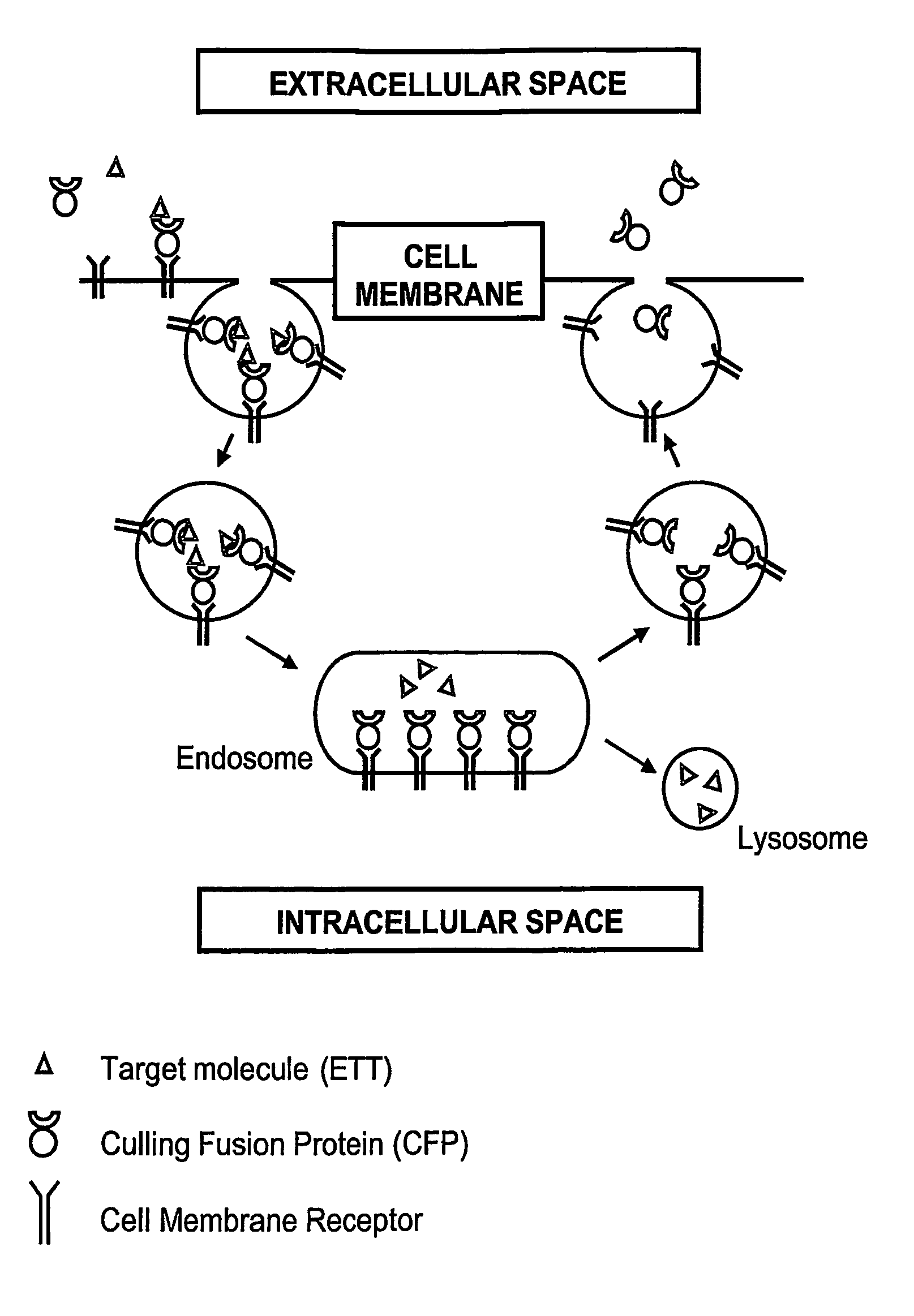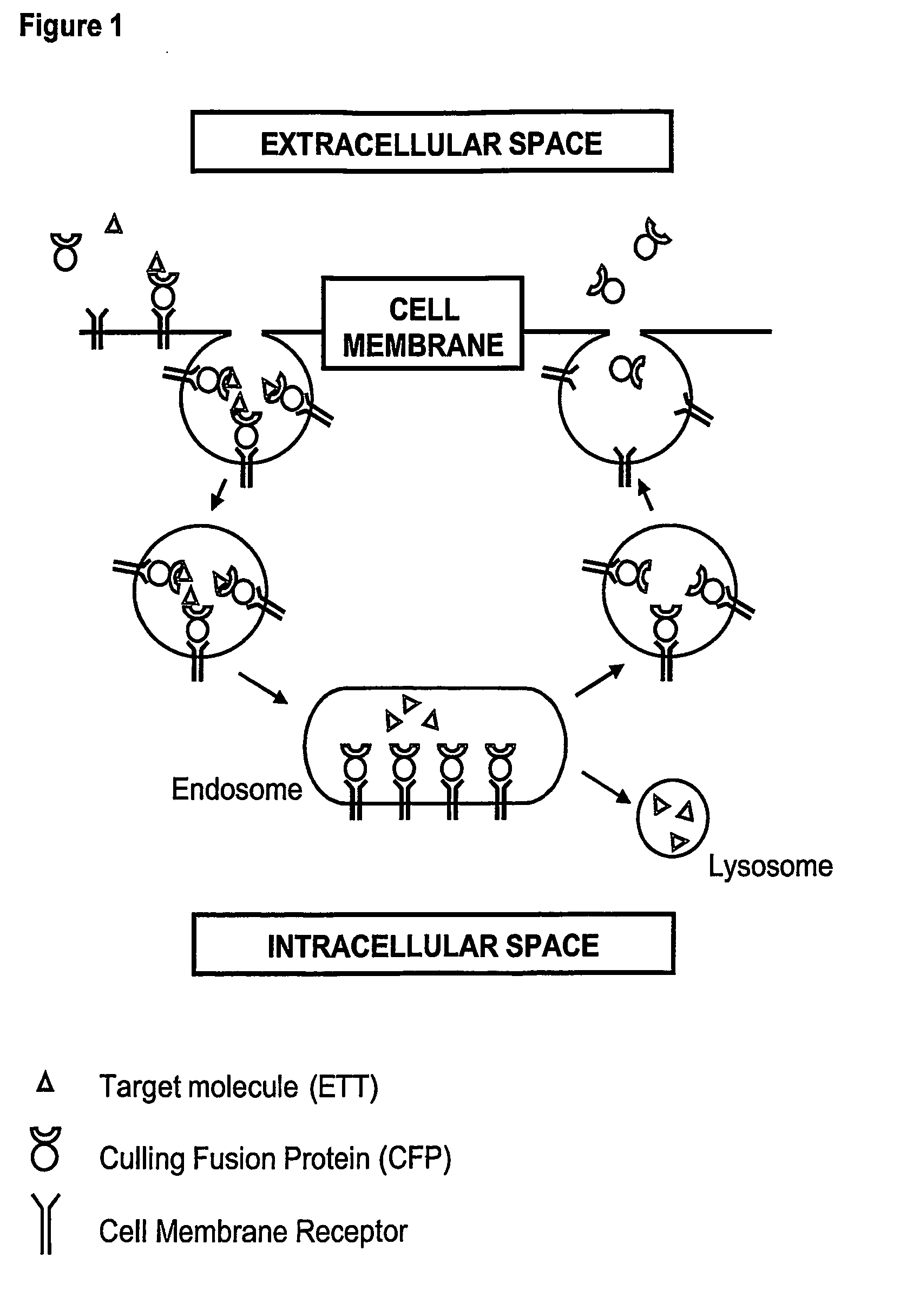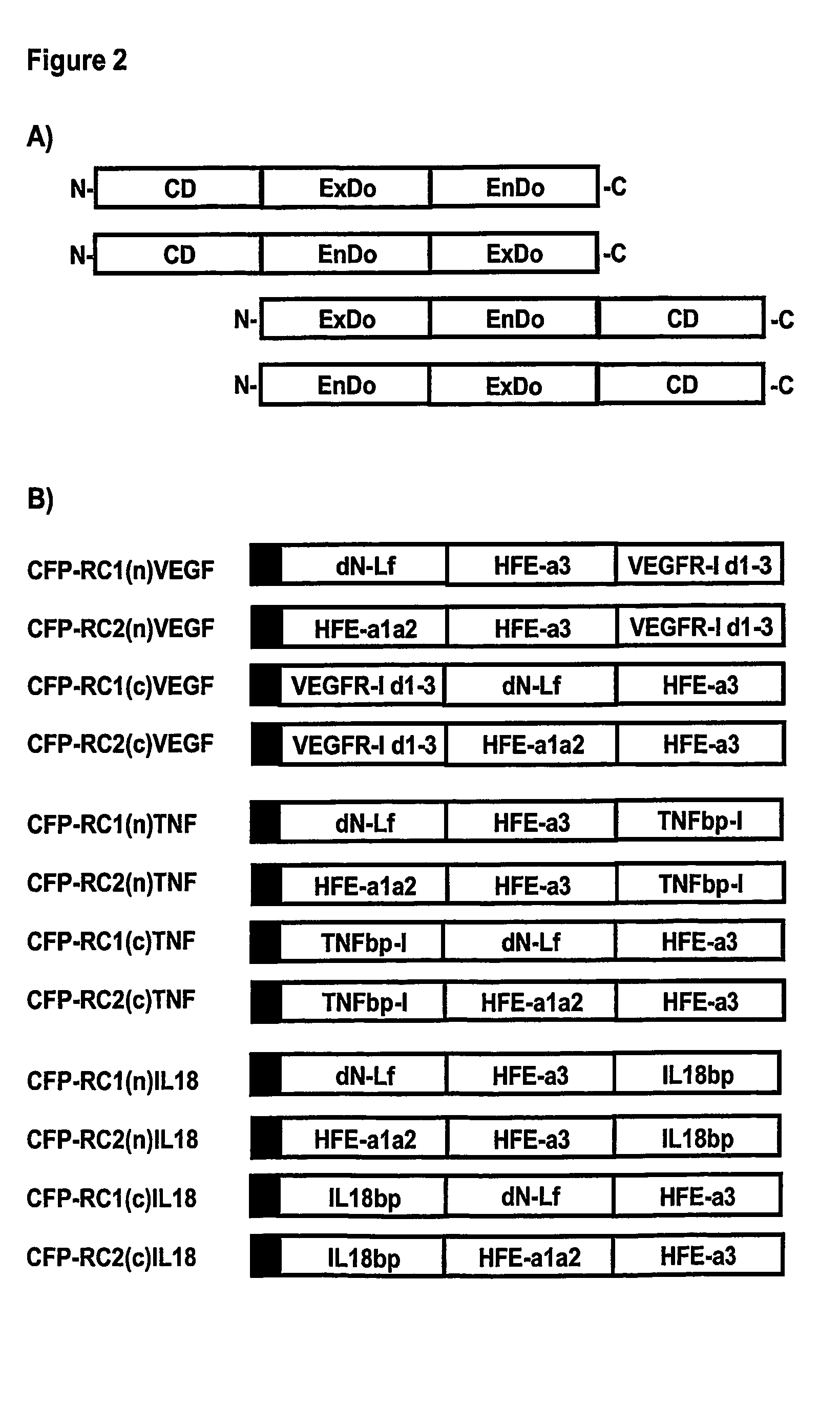Novel Therapeutic Fusion Proteins
a technology of fusion proteins and proteins, applied in the field of new therapeutic proteins, can solve problems such as failure of candidate drug molecules in clinical developmen
- Summary
- Abstract
- Description
- Claims
- Application Information
AI Technical Summary
Benefits of technology
Problems solved by technology
Method used
Image
Examples
example 1
Production of Culling Fusion Proteins (CFPs)
[0115] Each of the culling fusion proteins contains an endocytosis domain, an exocytosis domain, and a culling domain (FIG. 2A). The DNA fragments coding for the Exocytosis Domain (ExDo), the Endocytosis Domain (EnDo), and the Culling Domain (CD, such as soluble receptors or monovalent antibodies that can bind to and neutralize therapeutic targets) can be generated and controlled in the appropriate expression vector by standard molecular biology technologies (PCR mutagenesis and amplification, DNA sequencing, restriction digestion). Expression vectors can be maintained in strain of E. coli during the cloning process but CFPs can be expressed in any kind of host cell (other bacteria, yeast, as well as insect, plant or mammalian cells).
[0116] In order to facilitate the generation of CFPs, a CFP-dedicated vector should contain a multiple cloning site at the 3′ and / or 5′ end of the sequence encoding the Exocytosis Domain (ExDo) and the Endoc...
example 2
In vitro Characterization of CFPs
[0119] Upon the construction, expression, and purification of the CFPs, their in vitro characterization involves preliminary studies for checking whether endocytosis, exocytosis, and target-binding domains retain their respective binding activities (i.e. for membrane-bound proteins triggering the endocytosis / exocytosis of the CFPs and the therapeutic target).
[0120] These studies can make use of recombinant or purified test proteins potentially interacting with CFPs to form complexes that can be detected with any appropriate method. At this scope, any technology, allowing a determination of protein-protein interactions that is reliable at least qualitatively, can be used with test proteins and the CFPs.
[0121] According to the chosen method, test proteins and CFPs may be used as such, complexed with membranes or antibodies, modified with a detectable label, and / or immobilized on a support. For example, CFPs can be prepared in a radioactive form, by ...
example 3
Cell-Based Assays
[0125] CFPs are designed and constructed to contain the minimal information allowing [0126] the ETT binding, [0127] the binding to the cell receptors, and [0128] the recycling via receptor-mediated endocytosis and exocytosis.
[0129] In this context, the in vitro assay described in the previous paragraph are preliminary to cell binding assays for CFPs, which can be designed as equilibrium binding assay involving labeled CFPs added to cell cultures, so that immobilized CFPs can be measured. This assay, with appropriate modifications, can be carried out as described for differentiated hepatocytes or human colon carcinoma cells HT-29cl.19A (Sitaram M P and McAbee D, 1997).
[0130] The amount of CFPs immobilized on the cells can be measured, for example, with HT-29cl.19A cells grown filter discs can be mixed with various concentration of iodinated CFPs in presence of Ringer-HEPES buffer and of competing, non-labeled molecules (e.g. 0.2% serum Transferrin), or any other a...
PUM
| Property | Measurement | Unit |
|---|---|---|
| pH | aaaaa | aaaaa |
| pH | aaaaa | aaaaa |
| pH | aaaaa | aaaaa |
Abstract
Description
Claims
Application Information
 Login to View More
Login to View More - R&D
- Intellectual Property
- Life Sciences
- Materials
- Tech Scout
- Unparalleled Data Quality
- Higher Quality Content
- 60% Fewer Hallucinations
Browse by: Latest US Patents, China's latest patents, Technical Efficacy Thesaurus, Application Domain, Technology Topic, Popular Technical Reports.
© 2025 PatSnap. All rights reserved.Legal|Privacy policy|Modern Slavery Act Transparency Statement|Sitemap|About US| Contact US: help@patsnap.com



